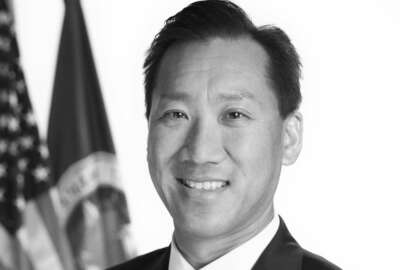

As the Trump administration plans major changes to the current hiring and firing systems, federal experts say government can't solve without addressing the othe...
Best listening experience is on Chrome, Firefox or Safari. Subscribe to Federal Drive’s daily audio interviews on Apple Podcasts or PodcastOne.
As the Trump administration spells out its plans to create a “21st century workforce” and resolve long-held challenges with the current hiring and firing processes, federal workforce experts say the two challengers are intertwined, and it’ll be tough to fix one without addressing the other.
The current environment makes it too difficult to motivate federal managers to discipline poor performers, federal experts say, and supervisors lack the support they need to hold “bad actors” accountable, the president’s new management agenda said.
“What happens when [poor performers] get removed? The supervisor is now in the process of in a year, or six months, to get a job filled,” Bob Gilson, a senior labor and employee relations adviser for RGS Incorporated, said Monday at the Heritage Foundation. “Their choice is, do I keep someone around who does three of the five things, OK, or do I go after them and then even if I’m successful getting them out the door, do I then I have to wait whatever period of time to get someone in to do those five things? Therein lies the problem.”
Once supervisors remove an employee, they typically face a long hiring process to replace the person they let go. It took agencies an average of 106 days to hire a new employee in fiscal 2017, the Office of Personnel Management recently told Congress. That time-to-hire number has crept up every year since 2012.
Many of the challenges that federal workforce experts see with the current civil service system are well-documented. But generally, they say employees have too many different avenues to appeal a disciplinary action: a formal grievance if they’re represented by a union, an appeal to the Merit Systems Protection Board or a complaint with the Equal Employment Opportunity Commission.
All of those avenues have varying timelines associated with them. Employees who appeal to the MSPB, currently without a quorum, face their own set of challenges.
“Is it doable? Yes, it’s doable, but it’s a very long-term process for any supervisor or manager to go through,” said Bob Dietrich, a former agency negotiator and now an instructor with Graduate School USA. “That serves as a huge disincentive to our supervisors and managers who want to do the right thing and remove this negative investment from the workplace.”
Citing the most recent Federal Employee Viewpoint Survey results, the Trump administration named hiring and firing as two of the major components to the 21st century workforce cross-agency priority goal in the President’s Management Agenda.
“The administration will improve employee performance management to better reward high performing employees while supporting managers in removing poor performers,” the Office of Management and Budget wrote in the President’s Management Agenda, which it released last week with more detail.
OMB has already asked agencies to develop a comprehensive performance management plan in tandem with their reorganization plans.
According to the 2017 FEVS, about 31 percent of federal employees in 2017 said they were satisfied with how their agencies deal with poor performance — just slightly better than 2016’s 29 percent.
Federal employees generally viewed their agencies’ ability to hold poor performers accountable slightly more favorably in 2017 compared to the previous year, but it’s consistently one of the lowest scoring questions on the annual viewpoint survey.
All major agencies either improved or made no changes on this survey question over the last year. The Homeland Security Department has the fewest number of employees who are satisfied with their agency’s ability to hold poor performers accountable. Just 26 percent expressed confidence with DHS on this question, though it actually improved by 3 percent over the last year. The Justice and Veterans Affairs Departments also hold low scores in this area. Nearly 29 percent of employees at both agencies said they were satisfied with how Justice and VA deal with poor performers.

The Trump administration said it will work with Congress to eliminate or change the statutory and regulatory rules — most of which were born in the Civil Service Reform Act of 1978 — that created an “incomprehensible” system.
Federal experts have long been advocating for changes to the Civil Service Reform Act. After all, the world is a different place now than it was in 1978. About 40 years ago, secretaries, clerks and typists made up a higher proportion of the federal workforce. Now, agencies need more professionals with more highly technical expertise, said Bill Valdez, president of the Senior Executives Association.
“The world has changed, but the federal hiring system has not,” he said. “To make it worse, the federal hiring system has become even more ossified, even more conservative.”
A majority of the federal workforce thinks the same way. According to the recent FEVS, about 42 percent of the federal workforce said their agencies are hiring the right people with the right skills, a notch below 2016’s score of 43 percent.
The federal community should abandon the term “reform” and focus instead on modernizing the civil service system to bring it up to 21st century standards, Valdez added.
“We need to take a step back and think about what we actually want the federal workforce to actually look like and then design a hiring system that is appropriate for that new workforce that we want,” he said.
Copyright © 2024 Federal News Network. All rights reserved. This website is not intended for users located within the European Economic Area.
Nicole Ogrysko is a reporter for Federal News Network focusing on the federal workforce and federal pay and benefits.
Follow @nogryskoWFED

 Exclusive
Exclusive 